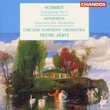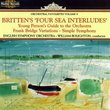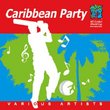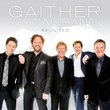| All Artists: Antonio Vivaldi, Robert Woolley, Purcell String Quartet, Purcell Quartet Title: Vivaldi: Sonatas for Strings, Vol. 1 Members Wishing: 0 Total Copies: 0 Label: Chandos Release Date: 7/29/1992 Genre: Classical Styles: Chamber Music, Historical Periods, Baroque (c.1600-1750), Classical (c.1770-1830), Instruments, Strings Number of Discs: 1 SwapaCD Credits: 1 UPC: 095115050224 |
Search - Antonio Vivaldi, Robert Woolley, Purcell String Quartet :: Vivaldi: Sonatas for Strings, Vol. 1
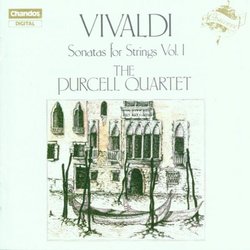 | Antonio Vivaldi, Robert Woolley, Purcell String Quartet Vivaldi: Sonatas for Strings, Vol. 1 Genre: Classical
|
Larger Image |
CD DetailsSimilar CDs
|
CD ReviewsVivaldi is more than the Four Seasons! Leslie Richford | Selsingen, Lower Saxony | 10/03/2005 (5 out of 5 stars) "For many listeners, the Vivaldi revival has been limited to ?The Four Seasons?, and the frequency with which excerpts from this evergreen are played on classical radio stations could lead one to the conclusion that Stravinsky was right when he pooh-poohed at Vivaldi?s creative achievement with the remark that he had written the same concerto 600 times! But of course there was and is much more to the ?prete rosso? (red priest ? Vivaldi?s nickname because of the color of his hair) than just ?Le Quatro Stagione?, as many recordings from the ?early music? scene testify: sacred and secular vocal music, concertos for all sorts of combinations of instruments and, last but not least, chamber music. It is this last neglected area that is here explored (on the first of two CDs dedicated to Vivaldi) by the Purcell Quartet, here consisting of Catherine Mackintosh and Elizabeth Wallfisch (baroque violin), Richard Boothby (baroque cello) and Robert Woolley (harpsichord).
The disc does not, as one might perhaps be tempted to surmise, contain trio sonatas but rather six sonatas for two violins with and without continuo (RV 70 is here played as a violin duet without the continuo instruments) plus one sonata (RV 29) for solo violin and continuo. This fascinating music tends to confirm the contemporary opinion about Vivaldi quoted in the booklet: ?Although he played exceptionally difficult and animated pieces he lacked a pleasant and cantabile style.? There is a certain ruggedness in the quality of the music which may surprise those who have, until now, assumed that the ?Four Seasons? were all Vivaldi was up to. It is perhaps also a little surprising to find that fast movements abound, whereas slower ones are quite few and far between. The recording, made in 1989 at two sessions, one in London and the other at a church in the village of Orford, Suffolk, is a lovely, clear effort that, presupposing the right hifi-equipment, enables one to follow the playing of the two violins despite the fact that Ms. Mackintosh and Ms. Wallfisch were obviously standing quite near each other during the recording sessions (the continuo instruments being to the right). The playing is, to my ears at any rate, delightful, and the ?intonation problems? detected by a well-known critic must be such as only an expert can recognize because I did not hear anything that really grated on the ear at all ? rather the opposite, making it a bounden duty to listen to this disc over and over again at intervals and to rejoice in the ?other Vivaldi?, the ?prete rosso? as a master of chamber music for the violin. " |

 Track Listings (23) - Disc #1
Track Listings (23) - Disc #1

